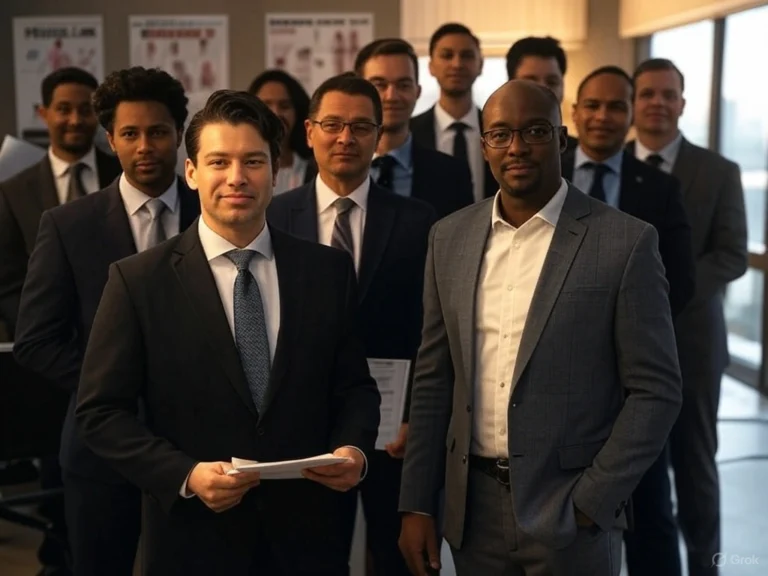
The entertainment industry, with its glamour and allure, often obscures the complex legal framework that protects the rights of those who work within it. The question of how laws protect entertainment industry workers encompasses a multifaceted system of federal and state regulations, union agreements, and evolving legal precedents that collectively establish the boundaries of acceptable workplace practices. These legal protections serve as the foundation upon which the industry operates, ensuring that those who create our cultural content receive fair treatment, compensation, and working conditions commensurate with their contributions.
The legal landscape governing entertainment workers has developed over decades, responding to the unique challenges and vulnerabilities inherent in an industry characterized by project-based employment, irregular schedules, and significant power imbalances. From actors and musicians to stagehands and production assistants, entertainment professionals face distinctive workplace issues that traditional employment law frameworks sometimes struggle to address adequately. Understanding these protections requires examining how general employment laws intersect with industry-specific regulations and the crucial role that collective bargaining plays in establishing and enforcing standards.
Recent developments, including the impact of technology and the rise of independent contractor classifications, have further complicated the legal terrain. The entertainment industry continues to grapple with defining the boundaries between employment and independent contracting, particularly as digital platforms transform how content is created and distributed. These changes have prompted legislative responses, court challenges, and renewed union activism aimed at preserving and expanding worker protections in an evolving landscape.
Foundational Employment Protections
En el fondo, entertainment industry workers benefit from the same fundamental legal protections that apply to employees across all sectors. These include federal laws such as the Fair Labor Standards Act (FLSA), which establishes minimum wage requirements, overtime provisions, and child labor restrictions. The FLSA creates a baseline of protection that ensures entertainment workers receive at least the federal minimum wage for their services and additional compensation for hours worked beyond the standard 40-hour workweek.
Similarly, Title VII of the Civil Rights Act prohibits discrimination based on race, color, religion, sex, or national origin, while the Americans with Disabilities Act (ADA) requires reasonable accommodations for qualified individuals with disabilities. These anti-discrimination protections are particularly significant in an industry where casting and hiring decisions have historically been influenced by factors unrelated to merit or ability. The legal framework created by these laws establishes boundaries that, while not eliminating all forms of discrimination, provide recourse for workers who experience unlawful treatment.
Workplace safety regulations, primarily enforced through the Occupational Safety and Health Administration (OSHA), also apply to entertainment settings. These regulations require employers to maintain safe working environments free from recognized hazards, a particularly important protection in an industry that often involves physical stunts, specialized equipment, and unconventional working conditions. The entertainment industry’s unique safety challenges have led to the development of specific guidelines addressing issues such as pyrotechnics, stunts, and animal handling, supplementing the general duty of care established by OSHA regulations.
California’s Distinctive Legal Framework
California, as the epicenter of the American entertainment industry, has developed particularly robust legal protections for entertainment workers that often exceed federal standards. The state’s labor code includes provisions specifically addressing entertainment industry practices, reflecting the economic importance of the industry to the state and the historical advocacy of entertainment unions based there. These California-specific protections serve as influential models that shape practices throughout the national entertainment landscape.
Among California’s distinctive protections is the Talent Agencies Act, which regulates who may procure employment for artists and performers. This law requires anyone who solicits or procures employment for artists to be licensed as a talent agent, creating a regulatory framework that helps protect performers from exploitation by unscrupulous representatives. The Act establishes a clear distinction between talent agents, who may procure employment, and personal managers, who may advise careers but not directly secure work without proper licensing.
California’s child actor protections are particularly comprehensive, reflecting the state’s long history with child performers. These laws establish strict limits on working hours, require the presence of teachers and guardians on set, and mandate that a portion of a child performer’s earnings be set aside in a trust (often called “Coogan accounts” after child actor Jackie Coogan, whose earnings were squandered by his parents). These protections acknowledge the unique vulnerabilities of child performers and establish safeguards designed to protect both their immediate welfare and long-term financial interests.
The Role of Collective Bargaining Agreements
Perhaps the most distinctive aspect of entertainment industry legal protections comes through the extensive network of collective bargaining agreements negotiated between employers and entertainment unions. These agreements establish detailed terms and conditions of employment that go far beyond the minimum standards set by general employment laws. Major entertainment unions such as SAG-AFTRA (representing actors), the Writers Guild of America, Directors Guild of America, and IATSE (representing technical crew members) have developed comprehensive contracts that address industry-specific concerns.
These collective bargaining agreements typically establish minimum compensation rates that exceed statutory minimums, often with additional payments for reuse of work (residuals) that recognize the ongoing value of creative contributions. They also address working conditions specific to entertainment production, such as turnaround time between workdays, meal breaks, and safety protocols for specialized work. The detailed nature of these agreements reflects decades of negotiation and refinement in response to evolving industry practices and worker concerns.
The enforcement mechanisms established through these agreements provide additional protection beyond what general employment law offers. Union contracts typically include grievance procedures that allow workers to address contract violations without immediately resorting to litigation. Union representatives advocate on behalf of members in these proceedings, helping to balance the power differential between individual workers and production companies. This system creates a layer of protection and accountability that supplements the broader legal framework established by state and federal law.
Independent Contractor Classification Challenges
One of the most significant legal challenges facing entertainment workers involves the classification of workers as employees versus independent contractors. This distinction carries profound implications for legal protections, as many employment laws apply only to those classified as employees rather than independent contractors. The entertainment industry has long relied on independent contractor relationships for certain roles, but the boundaries of appropriate classification have become increasingly contested.
California’s AB-5 legislation, which took effect in 2020, represents a landmark attempt to address misclassification by establishing a stricter test for independent contractor status. The law implements the “ABC test,” which presumes workers are employees unless the hiring entity can demonstrate that the worker: (A) is free from control and direction in performing the work, (B) performs work outside the usual course of the hiring entity’s business, and (C) is customarily engaged in an independently established trade or business. This test has significant implications for entertainment workers who have traditionally been classified as independent contractors.
The implementation of AB-5 has been particularly consequential for freelance workers in the entertainment industry, including writers, photographers, and various production roles. While unionized productions have been less affected due to existing collective bargaining agreements that already establish employee status for most workers, non-union productions and smaller companies have had to reconsider their classification practices. The law has prompted ongoing debate about the appropriate balance between protecting workers and maintaining the flexibility that characterizes much entertainment work.
Workplace Safety and Anti-Harassment Protections
The physical nature of much entertainment work creates distinctive safety concerns that require specialized legal protections. Film and television productions often involve stunts, special effects, and unusual working environments that present unique hazards. Legal frameworks addressing these risks include both general OSHA regulations and industry-specific safety standards developed through collective bargaining and industry practice.
Recent high-profile incidents, including on-set fatalities, have intensified scrutiny of safety practices and led to calls for stronger legal protections. Safety bulletins developed by labor-management safety committees provide detailed guidelines for handling specific hazards, from firearms to vehicle stunts. While these bulletins do not themselves have the force of law, they establish industry standards that can be relevant in determining liability when accidents occur and may be incorporated into collective bargaining agreements that do have legal enforceability.
The #MeToo movement brought renewed attention to sexual harassment in the entertainment industry, highlighting the need for effective legal protections against workplace harassment. While general anti-discrimination laws prohibit sexual harassment in all workplaces, the entertainment industry presents particular challenges due to its hierarchical structure, the intimate nature of some performance work, and the significant power imbalances between established industry figures and those seeking to establish careers. In response to these concerns, many production companies have implemented enhanced harassment policies, and some states have enacted legislation specifically addressing harassment in entertainment contexts.
Intellectual Property Rights and Compensation
The creative nature of entertainment work raises complex questions about intellectual property rights and fair compensation. Copyright law provides the fundamental framework for these issues, establishing who owns creative works and how compensation for their use should be structured. For many entertainment workers, particularly writers, directors, and performers, intellectual property rights significantly impact their long-term economic interests.
En work-for-hire doctrine generally establishes that creative works produced by employees within the scope of their employment belong to the employer. However, the boundaries of this doctrine become more complex in the entertainment context, where creative contributors may have varying degrees of independence and contractual relationships. Collective bargaining agreements often address these issues by establishing specific terms for how creative contributions will be credited and compensated, including provisions for residual payments when works are reused or distributed through new channels.
The digital transformation of entertainment distribution has created new challenges for ensuring fair compensation for creative work. Streaming platforms have disrupted traditional distribution models and compensation structures, prompting unions to negotiate new terms that address these evolving business models. The 2023 strikes by the Writers Guild of America and SAG-AFTRA highlighted these concerns, with both unions seeking updated contract terms that would ensure fair compensation for work distributed through streaming platforms and establish protections regarding the use of artificial intelligence to create or modify creative content.
Immigration Law and International Talent
The global nature of the entertainment industry necessitates consideration of immigration law as a significant component of the legal framework protecting entertainment workers. Foreign performers seeking to work in the United States typically require specific visa classifications, most commonly the O-1 visa for individuals with extraordinary ability or achievement. The legal requirements for obtaining these visas create both protections and potential barriers for international talent.
Production companies bear responsibility for ensuring compliance with immigration requirements when employing foreign talent. Failure to obtain proper work authorization can result in penalties for both the production company and the performer, potentially including prohibitions on future work in the United States. These legal requirements create a framework that, while sometimes burdensome, helps ensure that international performers receive proper contracts and working conditions rather than being exploited through informal arrangements.
The process of obtaining appropriate visas requires substantial documentation and often significant lead time, creating practical challenges for productions operating on tight schedules. Immigration attorneys specializing in entertainment visas play a crucial role in navigating these requirements. The complexity of the immigration system underscores the importance of proper legal guidance for both production companies and international performers seeking to work within the American entertainment industry.
Emerging Issues in Entertainment Worker Protection
The rapid evolution of technology continues to create new challenges for the legal protection of entertainment workers. The rise of artificial intelligence tools capable of generating or manipulating content raises profound questions about creative rights, compensation, and the future nature of entertainment work. Recent union negotiations have begun to address these concerns, seeking to establish boundaries around the use of AI while recognizing its potential role in the creative process.
The growth of social media platforms as both distribution channels and sources of content has further complicated the legal landscape. Social media influencers and content creators operate in a relatively new space where traditional entertainment industry protections may not clearly apply. Questions about whether these creators should be classified as employees of platforms, independent contractors, or something entirely different remain largely unresolved, creating potential gaps in legal protection for this growing segment of the entertainment ecosystem.
The COVID-19 pandemic prompted the development of new health and safety protocols for entertainment productions, many of which have been incorporated into collective bargaining agreements and industry practice. These protocols established requirements for testing, vaccination, and other preventive measures, creating a framework that helped productions resume while protecting worker health. While some of these measures have been scaled back as the immediate crisis has receded, the experience demonstrated the industry’s capacity to develop and implement new protections in response to emerging threats to worker safety.
The Enforcement Landscape
The effectiveness of legal protections ultimately depends on robust enforcement mechanisms. For entertainment workers, enforcement occurs through multiple channels, including government agencies, union grievance procedures, and private litigation. Each of these pathways offers distinct advantages and limitations, creating a complex landscape for workers seeking to vindicate their rights.
Government enforcement through agencies such as the Department of Labor, OSHA, and the National Labor Relations Board provides one avenue for addressing violations. These agencies can investigate complaints, issue findings, and in some cases impose penalties on employers who violate the law. However, limited resources and competing priorities sometimes constrain the effectiveness of government enforcement, particularly for industry-specific concerns that may require specialized knowledge to properly evaluate.
Union grievance procedures offer a more specialized enforcement mechanism for unionized workers. These procedures, established through collective bargaining agreements, typically provide for progressive steps to resolve disputes, often culminating in binding arbitration. The specialized nature of these processes allows for consideration of industry norms and practices, while union representation helps balance power dynamics between individual workers and production companies.
Private litigation represents a final enforcement pathway, allowing workers to directly sue employers for violations of their legal rights. While litigation can provide meaningful remedies, including monetary damages and injunctive relief, it also presents significant barriers in terms of cost, time, and emotional toll. The potential for retaliation or blacklisting, though legally prohibited, remains a practical concern that may deter some workers from pursuing litigation to enforce their rights.
The Path Forward for Entertainment Worker Protections
As the entertainment industry continues to evolve, the legal framework protecting its workers must adapt to address new challenges while preserving fundamental protections. Several key trends will likely shape this evolution, including the ongoing impact of technological change, the changing structure of the industry itself, and broader societal conversations about worker rights and economic justice.
Legislative initiatives at both state and federal levels continue to address gaps in the current protection framework. The Protecting the Right to Organize (PRO) Act, reintroduced in Congress in 2025, represents one such effort, seeking to strengthen workers’ ability to form and join unions—a particularly important consideration in an industry where union representation has historically provided crucial protections. State-level initiatives, particularly in California, continue to address industry-specific concerns, from talent agency regulation to protections for specific categories of entertainment workers.
Union advocacy remains a powerful force for expanding and enforcing entertainment worker protections. The 2023 strikes demonstrated the continued relevance and power of collective action in the entertainment industry, resulting in contract terms that addressed emerging concerns about artificial intelligence and streaming compensation. As the industry continues to evolve, unions will likely remain at the forefront of efforts to ensure that technological and business model changes do not undermine established protections.
The courts will continue to play a crucial role in interpreting and applying legal protections in the entertainment context. Judicial decisions addressing issues such as worker classification, the scope of intellectual property rights, and the boundaries of acceptable workplace conduct will help define the contours of legal protection. These decisions will necessarily engage with the tension between established legal principles and the unique characteristics of entertainment work.
In conclusion, the legal protection of entertainment industry workers involves a complex interplay of general employment laws, industry-specific regulations, collective bargaining agreements, and evolving standards of practice. This framework provides essential safeguards for those who create the content that shapes our cultural landscape, though challenges remain in ensuring these protections keep pace with industry changes. As technology transforms how entertainment content is created and distributed, maintaining robust legal protections for entertainment workers will require ongoing attention from legislators, courts, unions, and the industry itself. The fundamental principle that those who contribute their creativity, skill, and labor to entertaining the public deserve fair treatment and compensation will continue to guide the development of these protections, even as the specific mechanisms evolve to address new realities.
Citations:
- First Amendment Defense for Entertainment Employers
- Know Your Rights in Film Industry
- Film Labor Laws for Moviemakers
- Saldana Bill Protects Adult Entertainment Workers
- AI’s Influence on Entertainment Labor
- IATSE 2025 Agenda for Entertainment Workers
- Protections for California’s Entertainment Workers
- IATSE Supports PRO Act for Labor Reform
- AB-5 Law Impact on Entertainment Industry
- Entertainment Workers’ Legal Rights
- Employment Law for Film Studios
- Entertainment Payroll Basics
- Child Labor Laws in Entertainment
- Landmark Legislation in Entertainment Industry
- Entertainment and Sports Law Resources
- Overtime Pay for Entertainment Workers
- What is Entertainment Law
- Supporting Labor Relations in Entertainment
- Entertainment Labor Law Overview
- US Legal on Entertainment Law
- Workers’ Rights in Arts and Entertainment
- Saxton Stump Entertainment and Art Services
- Entertainment Law Wikipedia
- Adult Entertainment Rights Sign
- Navigating Entertainment Industry Regulations
- Forbes Legal Entertainment Insights
- Media Entertainment Legal Challenges 2023
- Navigating Legal Landscape in Entertainment
- Entertainment Law Case Summaries
- Hollywood AI Concerns and Legal Challenges
- Media Entertainment Legal Challenges 2023
- Watson v Arts Entertainment Case
- Future Entertainment Law Trends 2025
- Top Legal Issues in Entertainment 2024
- Truths About Entertainment Contracts
- Technology Changes in Media Entertainment Workforce
- State Laws Regulating AI in Entertainment
- AI Impact on Entertainment Industry
- AI in Entertainment Innovation vs Protection
- Employment Law Updates for 2025
- Digital Technology Impact on Workers’ Rights
- Safety Spotlight in Entertainment Industry
- New 2025 Laws Impacting Residents
- Human Rights in Workplace Monitoring Tech
- Trends to Watch in Entertainment 2024
- Legislation Impacting Employers in 2025
- Entertainment Labor Unions Overview
- Employee Rights in Entertainment Industry
- Employment Law in Entertainment Perspective
- Avoiding Employment Pitfalls in Film Industry
- Entertainment Law Cases Outline
- Media Entertainment Legal Developments
- Legal Implications of Streaming Services
- Entertainment Industry Layoffs Insights
- Guidance on Music in the Workplace
- Entertainment Law Scholarship Paper
- IATSE 2025 Agenda for Entertainment Workers
- AI Impact Report on Entertainment Industry
- New Employment Laws in California








